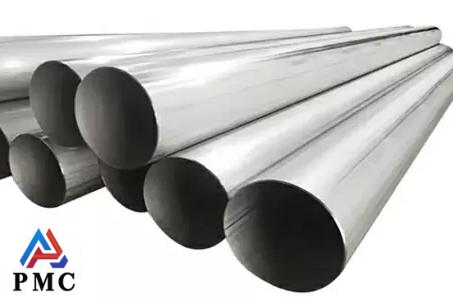
What are the Welding Methods of Stainless Steel Welded Pipes?
Stainless steel welded pipe, referred to as welded pipe, is a steel pipe made by welding steel or steel strip after curling and forming by a unit and a die. The production process of welded steel pipe is simple, the production efficiency is high, the variety and specifications are many, and the equipment investment is small, but the general strength is lower than that of seamless steel pipe.
What are the welding methods of stainless steel welded pipes?
There are many ways to weld stainless steel welded pipes. The most commonly used methods for stainless steel welded pipes can be divided into the following.
1. Argon arc welding
When stainless steel is welded with argon arc welding, due to its good protection, alloy elements are not easily burned, and the transition coefficient is high, the weld is well formed, there is no slag shell, and the surface is smooth. Therefore, the welded joint has high heat resistance and good mechanical properties.
Currently, the most widely used argon arc welding is manual tungsten inert gas welding, which is used to weld 0.5~3mm stainless steel thin plates. The composition of the welding wire is generally the same as that of the weldment. The shielding gas generally uses industrial pure argon. The welding speed should be appropriately faster and try to avoid lateral swing.
For stainless steel with a thickness greater than 3 mm, consumable argon arc welding can be used. The advantages of consumable argon arc welding are high productivity, small heat-affected zone of the weld, small deformation of the weldment, good corrosion resistance, and easy automation.
2. Gas welding
Gas welding is convenient and flexible, and can be used to weld seams in various spatial positions. Gas welding can sometimes be used for some stainless steel parts such as thin plate structures and thin-walled tubes when there is no corrosion resistance requirement. To prevent overheating, the welding nozzle is generally smaller than when welding mild steel of the same thickness. Gas welding flame should use neutral flame, welding wire should be selected according to the composition and performance of the weldment, gas welding powder should use gas 101.
It is best to use the left welding method when welding. The welding torch nozzle should be at an angle of 40-50° to the weld. The flame core should be no less than 2mm from the molten pool. The end of the welding wire should be in contact with the molten pool and move along the weld with the flame. The welding torch should not swing sideways, the welding speed should be fast, and interruptions should be avoided as much as possible.
3. Submerged arc welding
Submerged arc welding is suitable for welding stainless steel plates with medium thickness (6~50mm). Submerged arc welding has high productivity and good weld quality, but it is easy to cause segregation of alloy elements and impurities.

4. Manual welding
Manual welding is a very common and easy-to-use welding method. The length of the arc is adjusted by hand and is determined by the size of the gap between the electrode and the workpiece. At the same time, when used as an arc carrier, the welding rod is also a weld filling material. This welding method is very simple and can be used to weld almost all materials. It is very adaptable for outdoor use and can be used underwater.
5. MIG/MAG welding
This is an automatic gas shielded arc welding method. In this method, an electric arc burns between a current-carrying metal wire and a workpiece under a shielding gas. The metal wire fed into the machine acts as a welding rod and melts under its own arc. Due to the versatility and specificity of MIG/MAG welding, it is still the most widely used welding method in the world. It is used on steel, unalloyed steel, low alloy steel and high alloy based materials, making it an ideal welding method for production and repair. When welding steel, MAG can meet the requirements of thin gauge steel plates as thin as 0.6mm. The protective gas used here is an active gas such as carbon dioxide or a mixed gas. The only limitation is that when welding outdoors, the workpiece must be protected from moisture to maintain the effectiveness of the gas.
6. TIG welding
The arc is generated between the refractory tungsten welding wire and the workpiece. The shielding gas used here is pure argon, and the welding wire is not charged. The welding wire can be fed either manually or mechanically. There are also some specific applications that do not require the feeding of welding wire, and the material being welded determines whether direct current or alternating current is used. When using direct current, tungsten welding wire is set as the negative pole because it has a deep penetration ability and is very suitable for different types of steel, but it has no "cleaning effect" on the weld pool.
Read more: Production Process of Stainless Steel Welded Pipe


